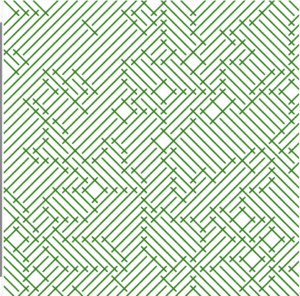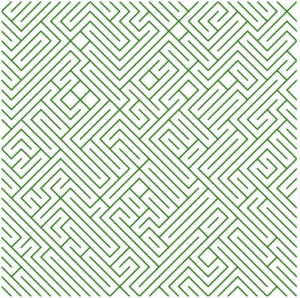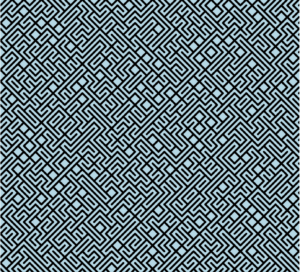When I first heard about creating a self-portrait, my mind immediately gravitated towards something that truly defines me – cricket. As someone deeply passionate about the sport, I couldn’t think of a better way to portray myself than through a project that encapsulates the essence of my love for cricket.
In this self-portrait, I envisioned a scene where a girl, embodying my presence, stands proudly with a cricket bat in her hands. The cricket ball, symbolizing the constant motion and dynamism of the game, is placed on the ground, perpetually moving. To add an interactive element, I incorporated the ability for the ball to jump when the user presses the mouse. The subtle details matter, and in this digital representation of myself, the girl periodically opens and closes her eyes every two seconds.
Code:
// Initializing the variables
let ballX = 220;
let ballY = 525;
let ballSpeedX = 1;
let ballSpeedY = 0;
let isJumping = false;
let jumpHeight = 100;
let eyeColor = '#FFFFFF';
let pupilcolour = '#E4DDDD';
function setup() {
createCanvas(600, 550);
}
function draw(){
background(200);
// sky
fill("#E5F7FA");
// gorund
rect(0,0,599,450);
fill("rgb(21,144,21)");
rect(0,442,599,600);
noStroke();
fill("#C3ECF1")
// clouds
circle(70,70,50);
circle(90,60,50);
circle(110,55,50);
circle(130,70,50);
circle(300,100,50);
circle(320,90,50);
circle(340,85,50);
circle(360,100,50);
// Thumbs of both the hands
fill('#E8BEAC')
ellipse(263,255,8,20);
ellipse(504,231,8,15);
// bat
fill('#C29C65')
ellipse(157,266,10,25);
// cylinder(20, 50);
rect(160,255,180,22);
quad(317,256,326,241,326,288,317,276);
rect(326,241,250,46);
ellipse(575,260,20,55)
stroke('#D5B78B')
strokeWeight(3);
quad(327,234,326,241,575,243,573,234)
// face
noStroke();
fill('#252423')
ellipse(390,200,100,110);
ellipse(410,200,100,110);
fill('#E8BEAC')
ellipse(400,200,95,105);
// print(mouseX+ ","+ mouseY);
// halmet
rect(389,245,25,40)
// hair and head
fill('#252423')
arc(400, 190, 100, 100, PI, 0);
// hair
stroke(50);
strokeWeight(2);
line(360,166,360,189);
line(366,166,366,189);
line(372,166,372,189);
line(380,166,380,189);
line(386,166,386,189);
line(392,166,392,189);
line(400,166,400,189);
line(406,166,406,189);
line(412,166,412,189);
line(418,166,418,189);
line(424,166,424,189);
line(430,166,430,189);
line(436,166,436,189);
line(442,166,442,189);
// eyes
if (frameCount % 120 == 0) {
eyeColor = (eyeColor === '#FFFFFF') ? '#000000' : '#FFFFFF';
}
if (frameCount % 120 == 0) {
pupilcolour=(pupilcolour === '#E4DDDD') ? '#000000' : '#E4DDDDF';
}
fill(eyeColor);
circle(377, 195, 15);
circle(422, 195, 15);
fill(pupilcolour);
circle(377, 195, 5);
circle(422, 195, 5);
// lips
noStroke(197,55,80);
fill('rgb(228,10,48)')
arc(400,223,30,15,0,PI)
// body
// rect(348,270,110,150);
quad(388,270,344,276,458,276,415,270);
rect(350,276,105,120);
// left arm
quad(350,274,350,309,287,330,287,300);
quad(287,300,287,330, 232,279,260,278);
// right aarm
quad(455,277,455,308,515,330,510,302);
quad(505,302,512,286,534,286,515,331);
// skirt
fill('#721781')
quad(350,396,350,506,455,506,455,396);
// fill('black')
// arc(350, 396, 50, 200, 0, PI + QUARTER_PI, CHORD);
// arc(350, 396,50, 100, 0, PI + QUARTER_PI, PIE);
ellipse(350, 450,30,110);
ellipse(454, 450,30,110);
// ellipse(403, 490,115,30);
ellipse(403, 400,115,30);
fill('#E8BEAC')
quad(359,505,368,550,397,550,390,505);
quad(415,505,415,550,444,550,445,505);
// fingers
quad(264,282,269,277,224,277,239,286);
// ellipse(263,255,8,20);
quad(262,245,251,254,253,261,262,253);
ellipse(252,257,7,7);
rect(244,246,7,20);
ellipse(247.5,266,7,7);
ellipse(247.5,245,7,7);
quad(247,241,260,247,253,253,249,248);
rect(236,248,7,20);
ellipse(239.5,249,7,7);
ellipse(239.5,269,7,7);
rect(228,249,7,18);
ellipse(231.5,251,7,7);
ellipse(231.5,267,7,7);
rect(220,251,6,15);
ellipse(223,254,7,7);
ellipse(223,264,7,7);
// right hand fingers
rect(532,228,6,15);
ellipse(535,228,6,6);
ellipse(535,242,6,6);
rect(524,227,6,20);
ellipse(527,229,7,7);
ellipse(527,247,7,7);
rect(516,224,6,25);
ellipse(519,225,7,7);
ellipse(519,247,7,7);
rect(509,220,6,25);
ellipse(512,223,7,7);
ellipse(512,246,7,7);
quad(221,259,221,249,248,249,248,241);
quad(536,226,535,235,512,230,512,220);
// Check if mouse is pressed
if (mouseIsPressed && !isJumping) {
isJumping = true;
ballSpeedY = -5;
}
// Move the ball
ballX += ballSpeedX;
ballY += ballSpeedY;
// apply gravity if not jumping
if (!mouseIsPressed && ballY < 525) {
ballSpeedY += 0.5;
} else if (ballY >= 525) {
ballY = 525;
ballSpeedY = 0;
isJumping = false;
}
if (ballX + 25 >= width || ballX - 25 <= 0) {
ballSpeedX *= -1;
}
// Ball
fill('#FFEB3B');
circle(constrain(ballX, 25, width - 25), ballY, 50);
fill('#E91E63');
ellipse(constrain(ballX, 25, width - 25), ballY, 20, 50);
ellipse(constrain(ballX, 25, width - 25), ballY, 50, 20);
}
Reflection:







